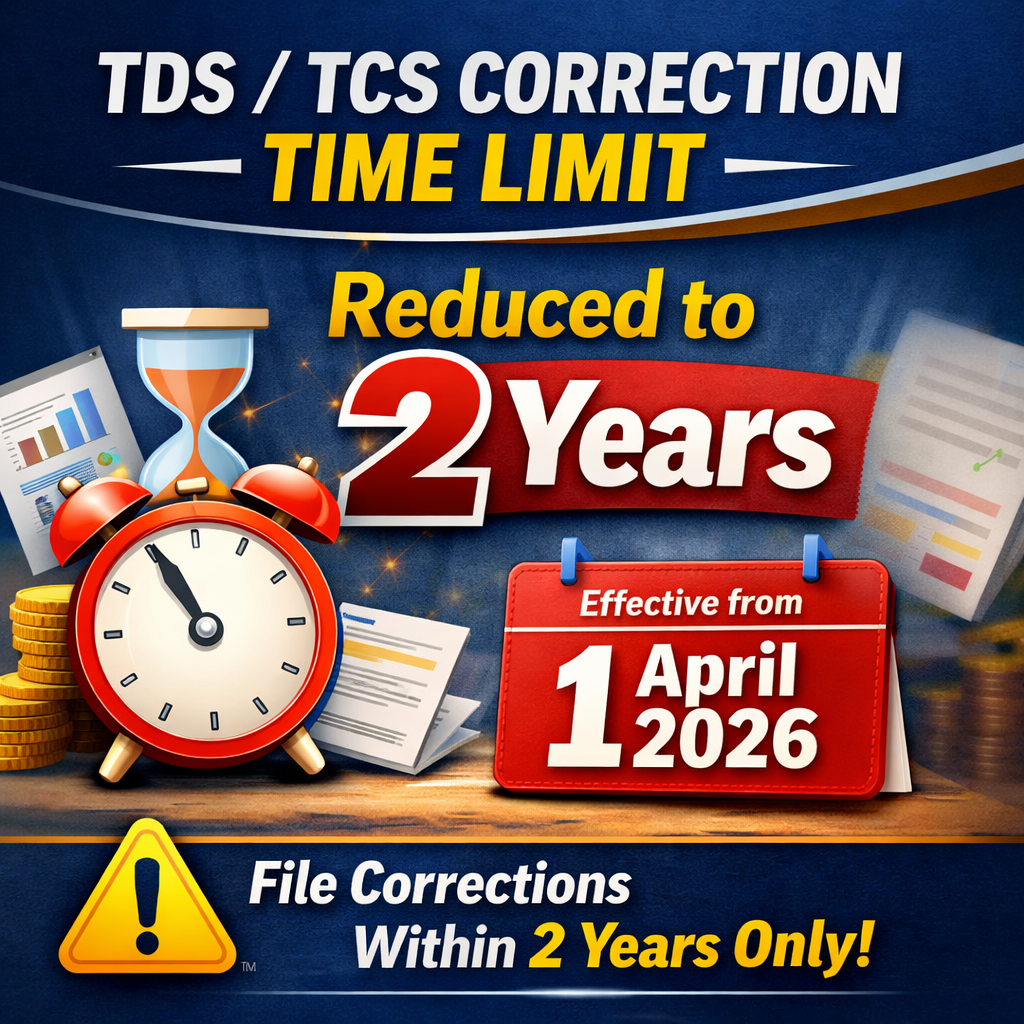New Banking and Cash Transaction Rules from 2026
🇮🇳 Introduction – Why Banking Transactions Deserve More Attention Today
In a rapidly digitising India, almost every financial move—personal or professional—passes through the banking system. Whether it’s UPI collections, cash deposits, fixed deposits, or GST-related receipts, banks today function not just as facilitators but also as statutory reporting entities.
A common misconception among taxpayers is that only very large or suspicious transactions attract scrutiny from the Income Tax Department.
However, this assumption is incorrect.
Even regular, everyday transactions—if misunderstood, misclassified, or improperly reported—can:
-
Get reported under Specified Financial Transactions (SFT)
-
Reflect in AIS / Form 26AS
-
Trigger income-tax notices
-
Result in bank account restrictions
-
Create GST registration or compliance complications
The purpose of this article/video is not to alarm, but to educate and empower.
In this guide, we clearly explain:
-
Banking transaction limits applicable for 2026
-
Transactions that are most likely to attract scrutiny
-
Rules related to cash, UPI, fixed deposits, and withdrawals
-
How bank activity links with Income Tax and GST
-
Practical steps to remain compliant and notice-free
If you carefully apply the compliance tips shared towards the end, you can manage your finances legally, confidently, and without unnecessary tax anxiety.
1️⃣ Banking Transaction Modes & Applicable Limits
🟦 UPI (Unified Payments Interface)
UPI remains India’s most popular digital payment method.
-
Standard daily limit: ₹1,00,000 per user
-
Per-transaction limit: Generally ₹1 lakh (varies by bank)
-
Higher limits: Up to ₹5 lakh per day for specific categories such as education, healthcare, government payments, and capital market transactions (effective 15 September 2025)
💡 Banks may impose lower internal limits—always verify with your bank.
🟦 IMPS (Immediate Payment Service)
-
Usually capped at ₹5 lakh per day per account
-
Available 24×7, making it suitable for urgent, higher-value transfers (subject to bank limits)
🟦 NEFT (National Electronic Funds Transfer)
-
Minimum: ₹1
-
No statutory maximum limit
-
Banks may set daily caps
-
Suitable for large-value transfers without UPI/IMPS restrictions
🟦 RTGS (Real-Time Gross Settlement)
-
Minimum transaction value: ₹2 lakh
-
No upper limit prescribed
-
Best for very high-value, time-sensitive transfers
2️⃣ Cash Transactions & Deposit Rules
🔸 Cash Deposit Reporting (SFT)
Banks and financial institutions are required to report:
-
₹10 lakh or more cash deposits in a savings account in a financial year
-
₹50 lakh or more cash deposits in a current account
-
₹10 lakh or more in fixed deposits during a financial year
👉 This does not mean tax is levied automatically, but the transaction is reported and may be examined.
🔸 Cash Receipt Restrictions – Section 269ST
-
Receiving ₹2 lakh or more in cash from a single person:
-
In one day, or
-
In a single transaction, or
-
For one occasion/event
is prohibited.
-
💡 Penalty can be equal to the cash amount received.
🔸 Cash Loans & Repayments – Sections 269SS & 269T
-
Acceptance or repayment of loans/deposits in cash above ₹20,000 is not allowed.
-
Penalty equals the amount involved.
3️⃣ TDS on Cash Withdrawals – Section 194N
This provision discourages excessive cash usage and promotes transparency.
🧾 TDS Applicability on Cash Withdrawals
| ITR Filing Status | Withdrawal Limit | TDS Rate |
|---|---|---|
| ITR filed for last 3 AYs | Above ₹1 crore | 2% |
| ITR not filed for last 3 AYs | Above ₹20 lakh | 2% up to ₹1 crore, 5% thereafter |
📌 Limits apply per bank, calculated cumulatively for the financial year.
4️⃣ Specified Financial Transactions (SFT)
Banks report high-value transactions such as:
-
Cash deposits crossing prescribed limits
-
Large or unusual digital inflows/outflows
These details appear in AIS and Form 26AS and must align with your ITR disclosures.
5️⃣ GST Linkage With Bank Accounts
🟡 GST Registration Threshold
-
Goods: ₹40 lakh
-
Services: ₹20 lakh
If bank receipts exceed these limits, GST registration becomes mandatory.
⚠️ Non-linking of bank account on GST portal within 30 days may lead to GST suspension.
6️⃣ Mandatory Disclosures in ITR & GST
📌 Income Tax Return
-
All bank accounts must be disclosed
-
Unexplained SFT entries can trigger notices
📌 GST Portal
-
Primary bank account linking is compulsory
-
Non-compliance can result in registration suspension
7️⃣ Business Cash Payment Restriction – Section 40A(3)
-
Cash expenses exceeding ₹10,000 per person per day are not deductible
-
Encourages digital payments and proper documentation
8️⃣ Practical Tips to Stay Notice-Free
✅ Maintain separate accounts for business and personal use
✅ Reconcile UPI inflows with business records
✅ Avoid unnecessary cash transactions
✅ File ITR regularly to benefit from higher withdrawal thresholds
✅ Maintain documentation for all large-value transactions
🧠 Key Takeaways
-
Know your banking limits and comply with them
-
Large cash dealings attract reporting and penalties
-
Regular ITR filing provides tangible compliance benefits
-
GST-bank linkage is critical for business continuity
-
Proper record-keeping is your best defence against notices










